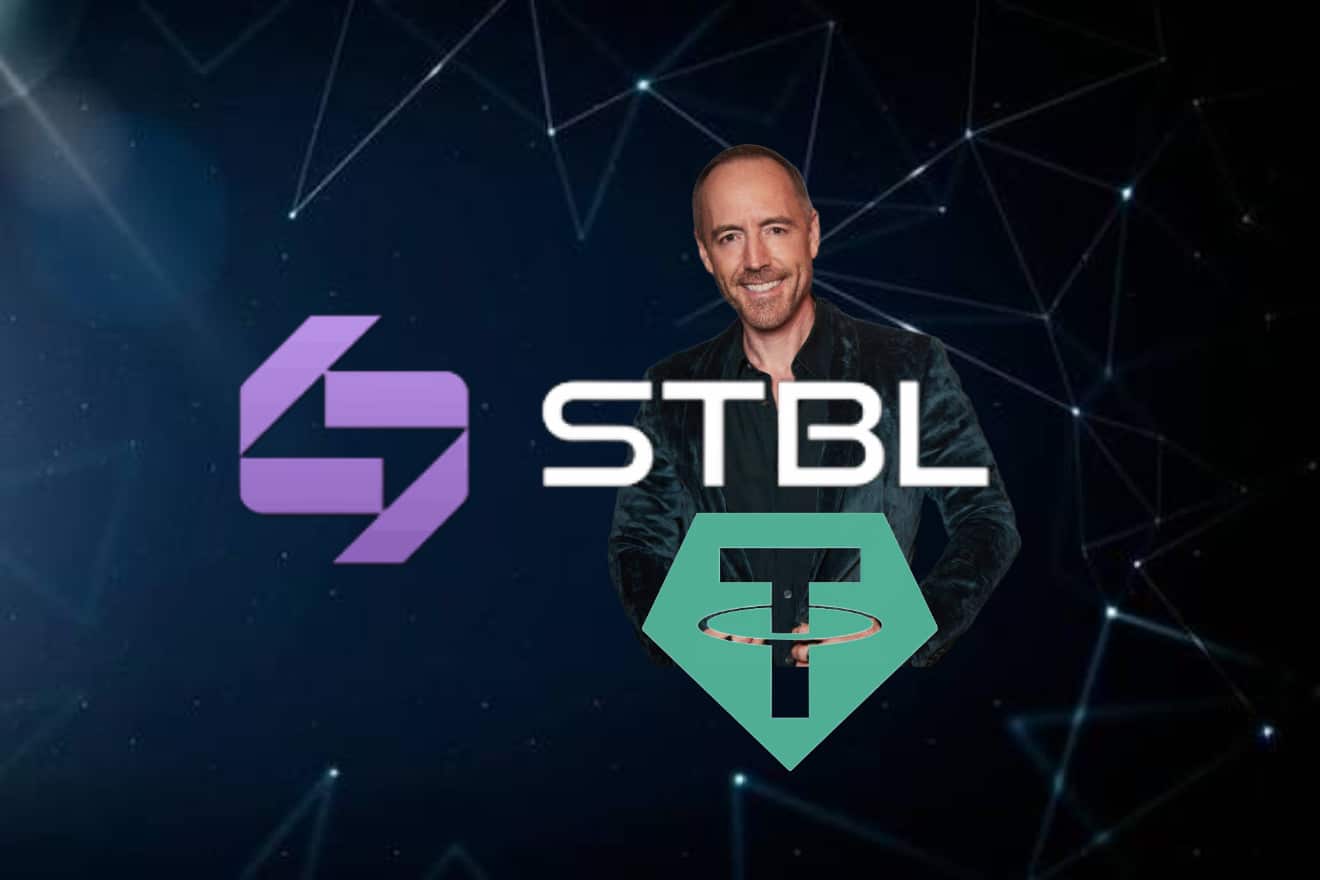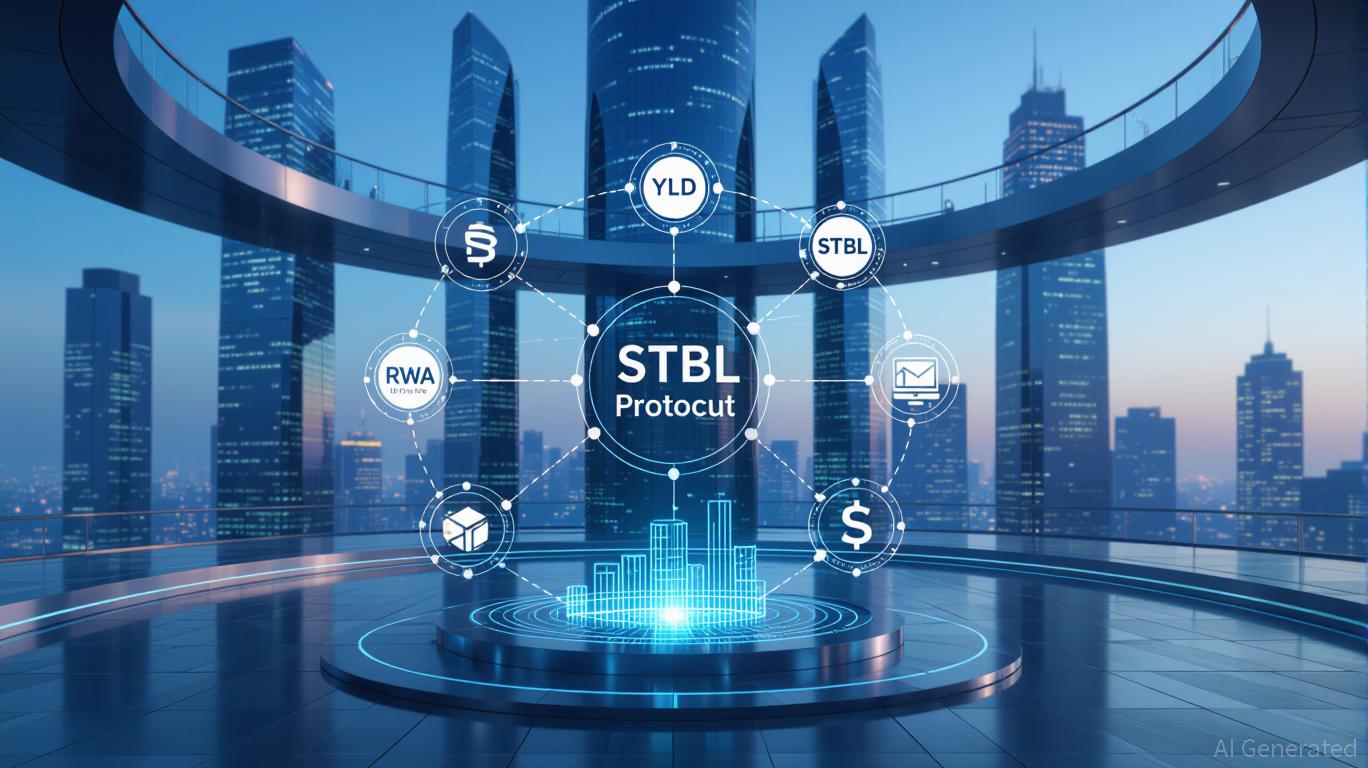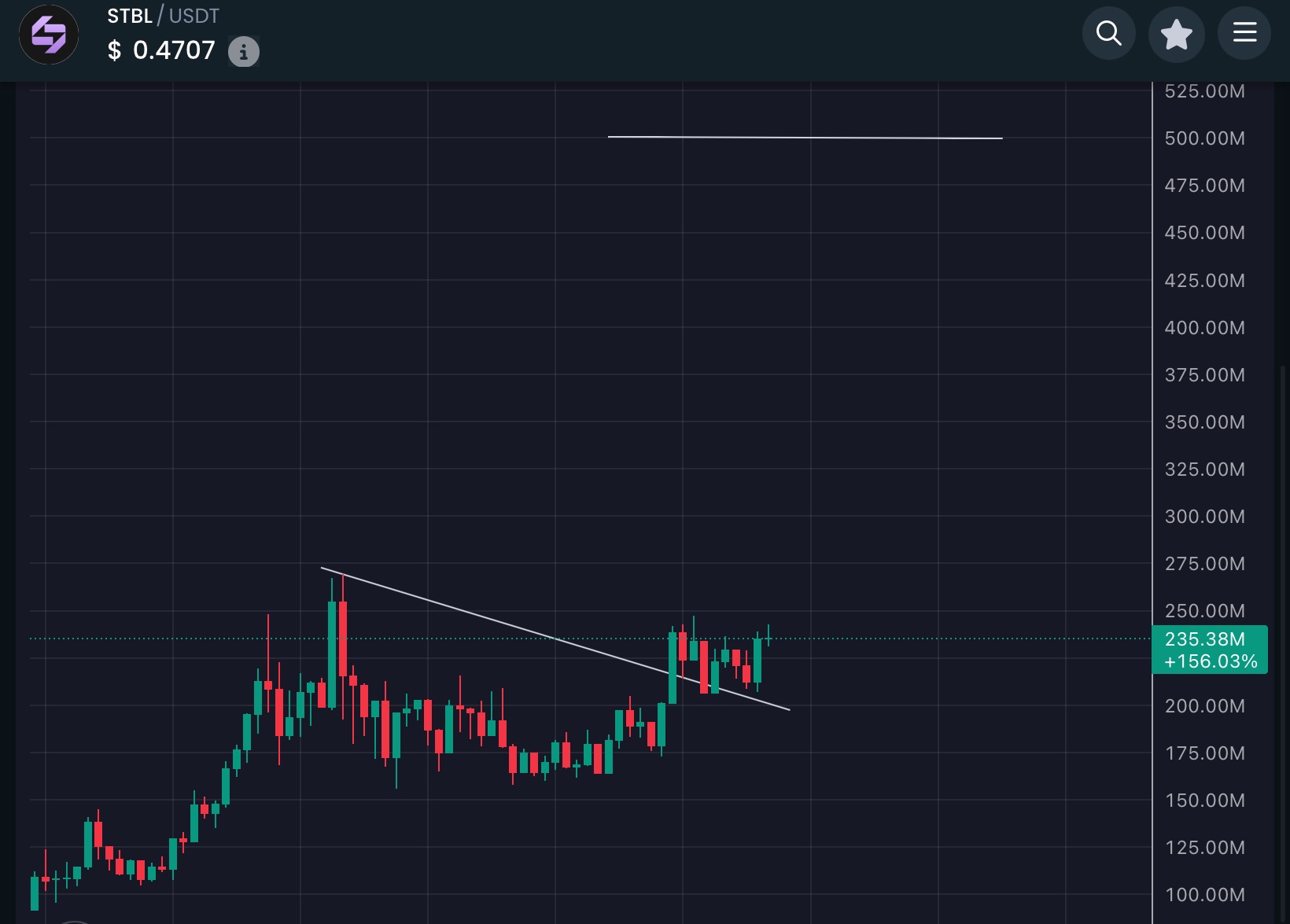How STBL and USST Are Changing Yield-Bearing Stablecoins: A Deep Dive Into RWA-Backed Passive Income

In the rapidly evolving world of decentralized finance (DeFi), yield-bearing stablecoins have emerged as a cornerstone for passive income strategies. Yet, not all stablecoins are created equal. The recent launch of the STBL Protocol’s $1 billion USST stablecoin marks a significant shift in how investors can earn sustainable, transparent yield from real-world assets (RWAs) – all while retaining the liquidity and stability that make stablecoins so attractive in the first place.
STBL and USST: A New Blueprint for Yield-Generating Stablecoins
The STBL Protocol introduces a dual-token model that reimagines what stablecoin utility can be. At its core is USST, a USD-pegged stablecoin backed by a diversified basket of tokenized RWAs such as U. S. Treasury Bills and investment-grade corporate bonds. This is complemented by YLD, an NFT representing the right to claim yield generated from these assets.
Unlike traditional DeFi yields, which often rely on speculative farming or inflationary token emissions, STBL’s design roots returns in tangible, off-chain value – namely, interest earned from real-world financial instruments. This approach offers several unique advantages:
- No-Stake Passive Yield: Minting USST automatically grants users YLD NFTs, which accrue yield without any staking or lockups. Compounding happens seamlessly in the background.
- On-Chain Transparency: Every USST is overcollateralized with RWAs whose balances and performance are visible on-chain for maximum transparency.
- No Lockups or Penalties: Users can mint or redeem at any time, maintaining full control over their assets.
- Sustainable Returns: Yield comes from RWA performance – not unsustainable incentives – making it more resilient through market cycles.
Current Market Data: STBL Price Action and Protocol Growth
As of today, STBL trades at $0.4421, reflecting a 24-hour change of $-0.1139 (-0.2048%), with a high of $0.5879 and a low of $0.4125. This price action follows an explosive period where STBL rallied over 321% weekly, driven by its innovative RWA-backed model and recent major exchange listings.
This surge signals growing investor confidence in protocols that bridge TradFi yield with DeFi accessibility – especially those offering transparent collateralization like USST versus legacy options such as USDT or DAI. With its $1 billion launch milestone, STBL is now one of the largest on-chain RWA experiments to date.
How the Dual-Token Model Works: Minting USST and Earning Effortless Yield
The mechanics behind STBL’s ecosystem are refreshingly simple yet powerful:
- Deposit Tokenized RWAs: Users provide approved collateral (e. g. , tokenized T-Bills) to mint new USST stablecoins pegged to $1 USD.
- Receive YLD NFTs Automatically: Alongside each minted USST, users receive YLD NFTs that accrue proportional yield generated by the underlying assets – no further action required.
- No Staking Required: Unlike most DeFi protocols where users must actively stake tokens to earn rewards (often facing lockups), here compounding occurs passively just by holding YLD.
- User-Friendly Experience: The protocol offers gas-optimized contract interactions for both end-users and developers looking to build on top of this architecture.
This structure elegantly solves two persistent problems in DeFi: how to offer sustainable yield without user friction or hidden risks, and how to ensure every dollar issued is transparently backed by real-world value at all times.
The Governance Layer: Community-Driven Security and Flexibility
The protocol’s governance token (STBL) empowers holders to vote on key parameters such as collateral types, risk ratios, and protocol upgrades. This ensures that system security evolves alongside market conditions while remaining community-driven rather than dictated by centralized actors, an important distinction given recent regulatory scrutiny facing centralized stablecoin issuers.
STBL (STBL) Price Prediction 2026-2031
Short- and Medium-Term Outlook Based on RWA Adoption, Protocol Growth, and Market Trends
| Year | Minimum Price | Average Price | Maximum Price | % Change (Avg YoY) | Market Scenario Insight |
|---|---|---|---|---|---|
| 2026 | $0.38 | $0.54 | $0.76 | +22% | Recovery after 2025 volatility; RWA adoption grows, but competition remains high |
| 2027 | $0.50 | $0.68 | $0.97 | +26% | Bullish scenario as DeFi integration increases and regulatory clarity improves |
| 2028 | $0.63 | $0.84 | $1.17 | +24% | Sustained adoption, more RWAs, and protocol upgrades drive value |
| 2029 | $0.74 | $1.02 | $1.38 | +21% | Mainstream RWA stablecoin use; STBL captures larger DeFi market share |
| 2030 | $0.92 | $1.21 | $1.62 | +19% | Global stablecoin growth, institutional adoption, and strong governance strengthen price |
| 2031 | $1.05 | $1.39 | $1.88 | +15% | Mature RWA market, STBL becomes a key DeFi yield platform, but faces stiff competition |
Price Prediction Summary
STBL is well-positioned to benefit from the growing trend of real-world asset (RWA) tokenization and the demand for yield-bearing stablecoins. The protocol’s transparent, overcollateralized model and passive yield mechanism may attract both DeFi users and institutions. Price projections show steady growth potential, but volatility is likely due to competition, regulatory factors, and the evolving DeFi landscape. While STBL could break the $1 mark in the next five years if mainstream adoption continues, downside risks remain in bearish scenarios.
Key Factors Affecting STBL Price
- Adoption of RWA-backed stablecoins and growth of DeFi yield products
- Regulatory clarity around stablecoins and tokenized securities
- STBL protocol upgrades, security, and community governance
- Competition from other RWA and yield-bearing stablecoin protocols
- General crypto market cycles and macroeconomic conditions
- Sustained transparency and real-world asset backing for trust and stability
Disclaimer: Cryptocurrency price predictions are speculative and based on current market analysis.
Actual prices may vary significantly due to market volatility, regulatory changes, and other factors.
Always do your own research before making investment decisions.
If you’re interested in diving deeper into how this split-yield model compares with other top RWA-backed stables or want actionable tips on maximizing your own returns with minimal risk exposure, check out our guide at How To Maximize Yield With RWA-Backed Stablecoins Like USST And YLD.
While the STBL- and USST-enabled model is already drawing attention for its efficiency and transparency, its real strength lies in how it addresses both risk management and user empowerment. With each USST minted, investors gain direct exposure to yield from institutional-grade assets, without the headaches of centralized custody or opaque accounting. The protocol’s overcollateralization and on-chain reporting provide a level of assurance that’s still rare among stablecoins.

For those weighing STBL against legacy options like USDT or DAI, the differences are more than technical, they’re philosophical. Where older stablecoins often rely on off-chain attestation or opaque reserves, STBL’s approach is fully auditable in real time. Every dollar of USST is transparently backed by tokenized U. S. Treasuries and corporate bonds, with live collateral balances viewable on-chain.
Risks and Considerations: What Investors Should Watch
No DeFi protocol is risk-free, and STBL/USST is no exception. Investors should be aware of:
- RWA Counterparty Risk: Tokenized T-Bills and bonds depend on reliable off-chain partners for custody and redemption.
- Market Volatility: While USST aims for stability, sharp moves in RWA prices or liquidity crunches could impact peg resilience.
- Smart Contract Security: As with any DeFi platform, code exploits remain a threat, regular audits are essential.
Key Benefits of STBL/USST Over Traditional Stablecoins
-

Passive, No-Stake Yield: STBL’s dual-token model lets users earn yield automatically via the YLD NFT, with no staking or lockups required. This means USST holders accrue yield passively, unlike most traditional stablecoins that offer no native yield.
-

RWA-Backed Transparency: Each USST token is overcollateralized with real-world assets like U.S. Treasury Bills and corporate bonds. All collateral is visible on-chain, ensuring greater transparency and trust compared to opaque reserves of some traditional stablecoins.
-

No Lockups or Penalties: Users can mint and redeem USST or YLD at any time without facing penalties or lockup periods, offering full liquidity and control over their assets—unlike some DeFi platforms with withdrawal restrictions.
-

Sustainable, Real-World Yield: Yield for USST holders comes from actual performance of underlying assets, not inflationary emissions or leveraged yield farming. This approach supports long-term stability and sustainability.
-

User-Friendly and Developer-Optimized: STBL provides a simple, gas-optimized interface for minting and managing USST and YLD, making it accessible for both everyday users and developers. This contrasts with the often complex processes found in older stablecoin protocols.
Despite these risks, the protocol’s design choices, overcollateralization, transparent governance, no lockups, set a new standard for sustainable passive income crypto strategies. For users seeking yield without excessive complexity or hidden pitfalls, this split-yield stablecoin architecture offers an attractive alternative to both CeFi products and speculative DeFi farms.
Community Pulse: Is STBL Here to Stay?
The market’s response has been telling: even after its recent surge to $0.4421 (with a 24-hour range between $0.4125 and $0.5879), trading volumes remain robust as new users test drive the protocol’s unique mechanics. Early adopters are already sharing their experiences with seamless yield claims and transparent collateralization, a stark contrast to some of the drama seen with algorithmic stables in previous cycles.
The next chapter will hinge on whether STBL can maintain this momentum as competition heats up among RWA-backed stablecoins. Its dual-token model gives it a head start, but ongoing governance engagement, security diligence, and ecosystem integrations will determine if it becomes a true DeFi mainstay.
If you’re considering adding yield-generating stablecoins to your portfolio, or want to compare how STBL stacks up against other options, our detailed analysis at How STBL And USST Are Revolutionizing Yield-Bearing Stablecoins With RWA Collateral breaks down performance metrics, risk factors, and strategy tips for every investor profile.













